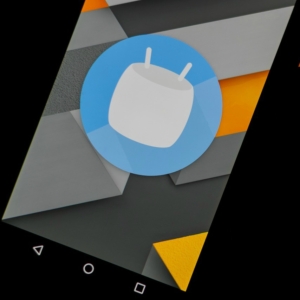 Want a preview of the future of mobile payments? All you need to do is take a look at new developments in China, India and even developing countries where they’re going from zero to 60 in what seems like seconds. We’ve made it easy for you to see what’s ahead with this collection of mobile payment trends and developments from around the world.
Want a preview of the future of mobile payments? All you need to do is take a look at new developments in China, India and even developing countries where they’re going from zero to 60 in what seems like seconds. We’ve made it easy for you to see what’s ahead with this collection of mobile payment trends and developments from around the world.
Fast Company profiles the huge numbers using mobile apps WePay, Alipay and WeChat in China and how the red packet gift envelopes called lai see or hong bao have propelled usage, engagement and profits. The following jaw-dropping numbers explain why Facebook Messenger is rolling out payments capability:
- iResearch, says China’s 2016 mobile payments market was worth $2.8 trillion vs $62.5 billion in the US in 2017
- WeChat (owned by Tencent) has 768 million app users, up 35% in one year
- Alipay has 400 million users and an estimated 175 million transactions daily; it owns 38% of the payments market
- 420 million WeChat users sent a total of 32 billion red envelopes during Chinese New Year 2016 (up 10 times over 2015) with 409,000 sent in the first second of the New Year.
 Euromonitor predicts that mobile payments in the 46 markets it monitors will reach $3 trillion by 2021, an estimated 11% of all payments. Trendforce expects the global mobile payments market to grow 25.8% in 2017, reaching $780 billion. The global mobile wallet market will grow annually by 35.5% from 2017 to 2021, according to research firm Research and Markets.
Euromonitor predicts that mobile payments in the 46 markets it monitors will reach $3 trillion by 2021, an estimated 11% of all payments. Trendforce expects the global mobile payments market to grow 25.8% in 2017, reaching $780 billion. The global mobile wallet market will grow annually by 35.5% from 2017 to 2021, according to research firm Research and Markets.
In India, PM Narendra Modi announced BHIM, a so-far Android-only mobile payments app with some important differences from other mobile wallets. Meanwhile, mobile payments leader Paytm received regulatory approval and expects to launch a digital bank within 60 days.
Miami-based YellowPepper has raised more than $40 million to grow its mobile payments technology in Colombia, Ecuador, Mexico and expand to other Latin American countries. Scott Blum, VP at Total Merchant Services, shares five payment trends to watch in 2017.
How Social Cash Made WeChat The App For Everything
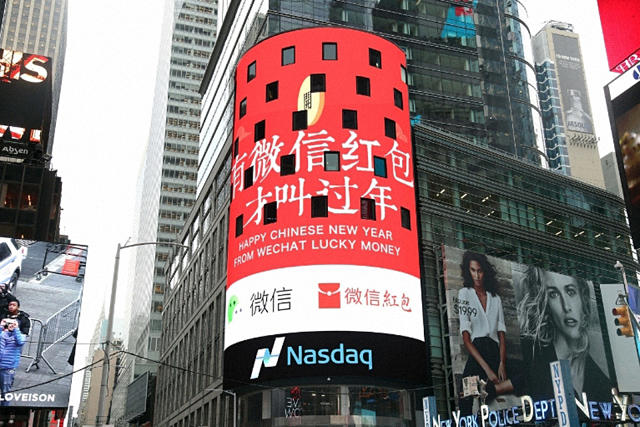 WeChat introduced mobile pay in 2013, a year before its Red Packets, but it’s the latter—with its seductive blend of social networking, gaming, and gambling—that got users on board with the concept of sending money electronically. Today, out of WeChat’s 700-plus million active users, nearly 300 million have added their bank information to WeChat Pay, enabling them to withdraw from and add money to their virtual wallets. That’s contributed to the most bustling mobile payments economy in the world: In 2015, China’s mobile transactions surged to $235 billion, surpassing the U.S. for the first time. According to iResearch, China’s mobile payments market is estimated to be worth 15.7 trillion yuan in 2016—28 times the $62.5 billion forecast by eMarketer for the U.S. in 2017—and 28.5 trillion yuan in 2018.
WeChat introduced mobile pay in 2013, a year before its Red Packets, but it’s the latter—with its seductive blend of social networking, gaming, and gambling—that got users on board with the concept of sending money electronically. Today, out of WeChat’s 700-plus million active users, nearly 300 million have added their bank information to WeChat Pay, enabling them to withdraw from and add money to their virtual wallets. That’s contributed to the most bustling mobile payments economy in the world: In 2015, China’s mobile transactions surged to $235 billion, surpassing the U.S. for the first time. According to iResearch, China’s mobile payments market is estimated to be worth 15.7 trillion yuan in 2016—28 times the $62.5 billion forecast by eMarketer for the U.S. in 2017—and 28.5 trillion yuan in 2018.
Red envelopes have seen similarly explosive growth. When the envelopes debuted in 2014 during Chinese New Year, the number of people using WeChat payments more than tripled from 30 million to 100 million in a month. Over the six-day holiday, users sent each other 20 million red envelopes. One year later, that number reached 3.2 billion.
This past Chinese New Year destroyed the previous year’s records: more than 420 million WeChat users sent a total of 32 billion red envelopes—a tenfold percent increase from 2015. And—here’s an “only in China” factoid—409,000 of them were sent in a single second, just after midnight on the first night of the holiday. Via fastcompany.com
5 trends shaping mobile payments worldwide in 2016
 In 2016, mobile-driven commerce will reach an estimated US$972.25 billion across the 46 markets where Euromonitor International conducts this digital research.
In 2016, mobile-driven commerce will reach an estimated US$972.25 billion across the 46 markets where Euromonitor International conducts this digital research.
Most impressively, mobile payments are expected to reach US$3 trillion by 2021. While that is a lot of transacted money across these small-screen devices, mobile-based payments will equate to only an estimated 11 percent of all consumer card payment volume across these markets in 2021, up from approximately 5 percent in 2016.
As mobile phones cement themselves as the most popular device on the planet and mobile-based commerce continues to expand leaps and bounds, the market potential in the next 10 to 20 years remains enormous. The stakes are certainly high for payment players, merchants and brands, which are all fighting to be among the first to get mobile right and gain significant adoption among an increasingly more connected consumer base. Via mobilepaymentstoday.com
Mobile payment market tipped to hit $780B in 2017
 The value of the global mobile payment market is set to increase by over 25 per cent in the next year, analyst forecasts said.
The value of the global mobile payment market is set to increase by over 25 per cent in the next year, analyst forecasts said.
Technology-focused analyst firm TrendForce estimated the value of the mobile payments industry will reach $780 billion in 2017, a 25.8 per cent increase on the value in 2016. The boost is attributed to continued intense competition between major smartphone and OS vendors to develop their ecosystems, and the increased availability of NFC chips and related security infrastructure.
The Taiwan-based research firm cited the impact of Chinese smartphone brands adding NFC chips to a growing number of handsets as one factor for the rise. It predicted over 60 per cent of smartphones shipped worldwide this year will feature NFC silicon. Via mobileworldlive.com
Mobile Pay Market Set for Double-Digit Growth
 The global mobile wallet market is projected to grow at a CAGR of 35.5 percent from 2017 to 2021, according to research firm Research and Markets. In a press release highlighting the launch of new research, dubbed “Global Mobile Wallet Market 2017–2021,” Research and Markets said the use of 3G and 2G mobile data and broadband around the globe is a big contributor to the growth of the mobile wallet market.
The global mobile wallet market is projected to grow at a CAGR of 35.5 percent from 2017 to 2021, according to research firm Research and Markets. In a press release highlighting the launch of new research, dubbed “Global Mobile Wallet Market 2017–2021,” Research and Markets said the use of 3G and 2G mobile data and broadband around the globe is a big contributor to the growth of the mobile wallet market.
“Mobile wallets are equipped with options like integration with coupons and tickets, which are making them highly popular among users. In addition, users can also save their card and bank details on their smartphones and make payments and purchases easily. The increasing technological advances in NFC devices and growing security of payment portals are other factors driving the market growth,” the research report firm wrote in the press release.
Research and Markets’ assessment of the mobile wallet market meshes with what Technavio, the research firm, found about the mobile wallet market. Technavio is also forecasting it to grow at a CAGR or more than 35 percent through 2021. According to Technavio, the use of mobile wallets in stores increased rapidly in 2015 and 2016 as operational costs for retailers were lowered, increasing their revenue. What’s more, the research firm said mobile wallets used in retail stores offer customers benefits, such as coupons and loyalty points. Via pymnts.com
BHIM app tops Google Play Store charts: Top points to note
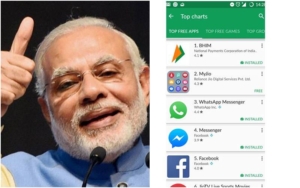 Prime Minister Narendra Modi announced the digital payments app BHIM from National Payments Corporation of India (NPCI) and it is now the top free app on Google Play Store. The digital payments app which brings a singular app for all UPI-based payments, was unveiled on December 30 and in just three days climbed to top of the charts.
Prime Minister Narendra Modi announced the digital payments app BHIM from National Payments Corporation of India (NPCI) and it is now the top free app on Google Play Store. The digital payments app which brings a singular app for all UPI-based payments, was unveiled on December 30 and in just three days climbed to top of the charts.
BHIM app has been downloaded more than 1 million times and has a 4.2 rating on the Play Store. Interestingly, the app has received reviews from more than 86,000 users in just over three days of its launch. Remember, BHIM app is only available for Android users.
However, users have reported several problems with the BHIM app. Users have complained of internal server errors as well, making it difficult to generate PINs or pay via app. The official BHIM app account had also tweeted that they were facing an issues due to massive interest from the public. It looks like an update called ‘#GoCashlessIndia’ was pushed out for users as well. Via indianexpress.com
Paytm, India’s top mobile payments firm, gets approval to launch its own digital bank
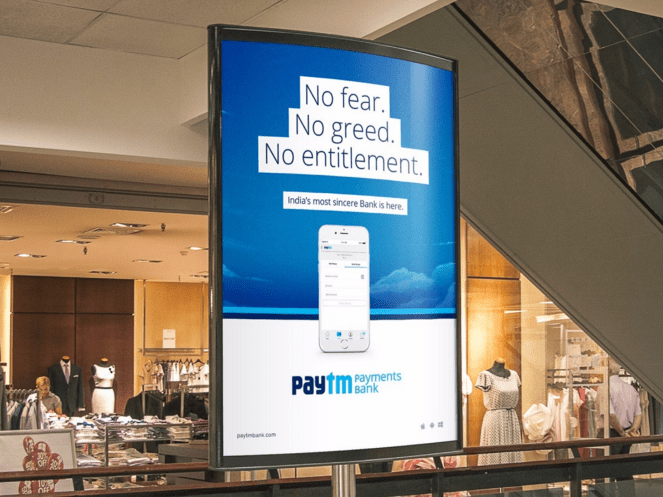 India’s leading mobile payments company Paytm has announced that it has formally received permission from the Reserve Bank of India (RBI) to launch a digital bank.
India’s leading mobile payments company Paytm has announced that it has formally received permission from the Reserve Bank of India (RBI) to launch a digital bank.
It’s been quite a ride for CEO Vijay Sekhar Sharma, who spun Paytm out of his original company, mobile content firm One97, in 2010. Paytm raised money from Ant Financial, the financial services affiliate from Alibaba, two years ago, before Alibaba itself invested itself some six months later at a $1 billion-plus valuation. The company has raised $760 million from investors to date, and it could be worth $6 billion according to reports of fresh investment.
The development of Paytm Payments Bank mirrors Alibaba and Ant Financial’s own course in China, where it is one of a number of top internet companies to expand into banking and financial services. Via techcrunch.com
YellowPepper expands mobile-payment platform in Latin America, attracts more investment
The world of mobile payments is one of the hottest segments of the financial technology industry. Based in Miami, YellowPepper has been a pioneer of mobile payment technology in Latin America, where an immense market need and a millennial-rich population of early adopters converge.
YellowPepper has done this before. Years ago, the YellowPepper team targeted the untapped Latin American mobile banking market and developed a state-of-the-art platform to enhance the overall consumer experience. While continuing to grow the mobile banking side of the business, YellowPepper is now focused on another untapped opportunity: mobile payment solutions for consumers in the region. The company, founded in 2004 in Boston, provides financial institutions with the latest technology that alters the way consumers and retailers transact.
YellowPepper is undergoing a growth spurt, recently deploying its mobile payments technology in Colombia, Ecuador and Mexico and looking to expand to other Latin American countries. To further power that growth, Volta Global, run by emerging markets specialist Marko Dimitrijević, recently became an investor in YellowPepper. The terms of the investment weren’t disclosed, but Miami-based YellowPepper has raised more than $40 million in venture capital to date, making it one of the highest funded early-stage fintech companies in Miami.
With such a large market opportunity, mobile payments continues to attract attention in the venture capital community. The global mobile wallet market is expected to reach $635 billion by 2020 from $113.5 billion in 2015, increasing 41 percent annually between 2015 and 2020, according to Research and Markets. Via miamiherald.com
5 mobile-payment trends to watch in 2017
 Each year brings new possibilities in mobile device technology. Smartphones have become more than just texting machines; they are now mini-computers, personal assistants and virtual shopping carts. More and more consumers would be lost without their smartphone, relying on it to get through the day.
Each year brings new possibilities in mobile device technology. Smartphones have become more than just texting machines; they are now mini-computers, personal assistants and virtual shopping carts. More and more consumers would be lost without their smartphone, relying on it to get through the day.
Given the advances and rapid rate of new technologies, smartphones have become essential to how we live our lives. Technologies including mobile wallets, on-demand apps, a new era of digital assistants, and enhanced connectivity through near field communications (NFC) and Bluetooth are transforming the way consumers interact and rely on their phones. Via mobilepaymentstoday.com
Global mobile payments
We keep an active watch on mobile payments, mobile apps, mobile technologies and disruption in the fintech and payments industry. Keep current on the latest mobile and other payments news every Monday-Wednesday-Friday morning by subscribing for free at the top of this page.

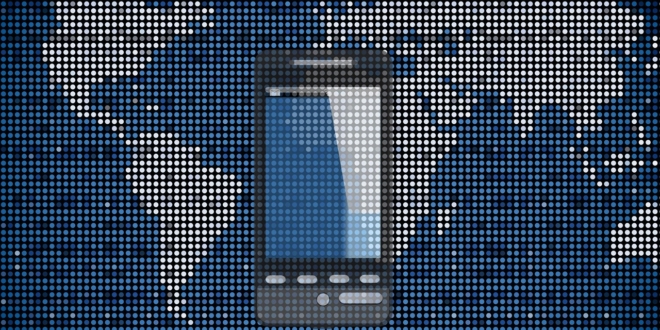






LET’S CONNECT